Ask Ethan: Why do physical predictions have limitations?

Black hole in the representation of the artist. We understand quite well what is happening outside the black hole, but inside it we are confronted with the limitations of fundamental physics, and, probably, the laws under which the Universe works
If you divide the matter of the universe into smaller and smaller components, you will eventually reach the limit, reaching a fundamental, indivisible particle. All macroscopic objects can be divided into molecules, then atoms, then electrons (fundamental particles) and nuclei, then protons and neutrons, and then, inside them, find quarks and gluons. Electrons, quarks and gluons are examples of fundamental particles that cannot be divided further. But how does it turn out that even space and time itself has similar limitations? Our reader asks:
Why are there lengths (Planck sizes) that cannot be divided further?
To understand where Planck lengths came from, you need to deal with two laws governing our reality: the general theory of relativity and quantum physics.

The fabric of space-time, with disturbances and deformation caused by the mass. The gravitational constant G and the speed of light are fundamental to GR
GR connects matter and energy in the universe with the curvature and deformation of the fabric of space-time. Quantum physics describes how different particles and fields interact with each other within the framework of the fabric of space-time on very small scales. In GR, two fundamental physical constants play a role: G, the gravitational constant of the Universe, and c, the speed of light. G determines the magnitude of the deformation of space-time due to matter and energy. c appears due to the fact that gravitational interactions propagate in space-time at the speed of light.
')
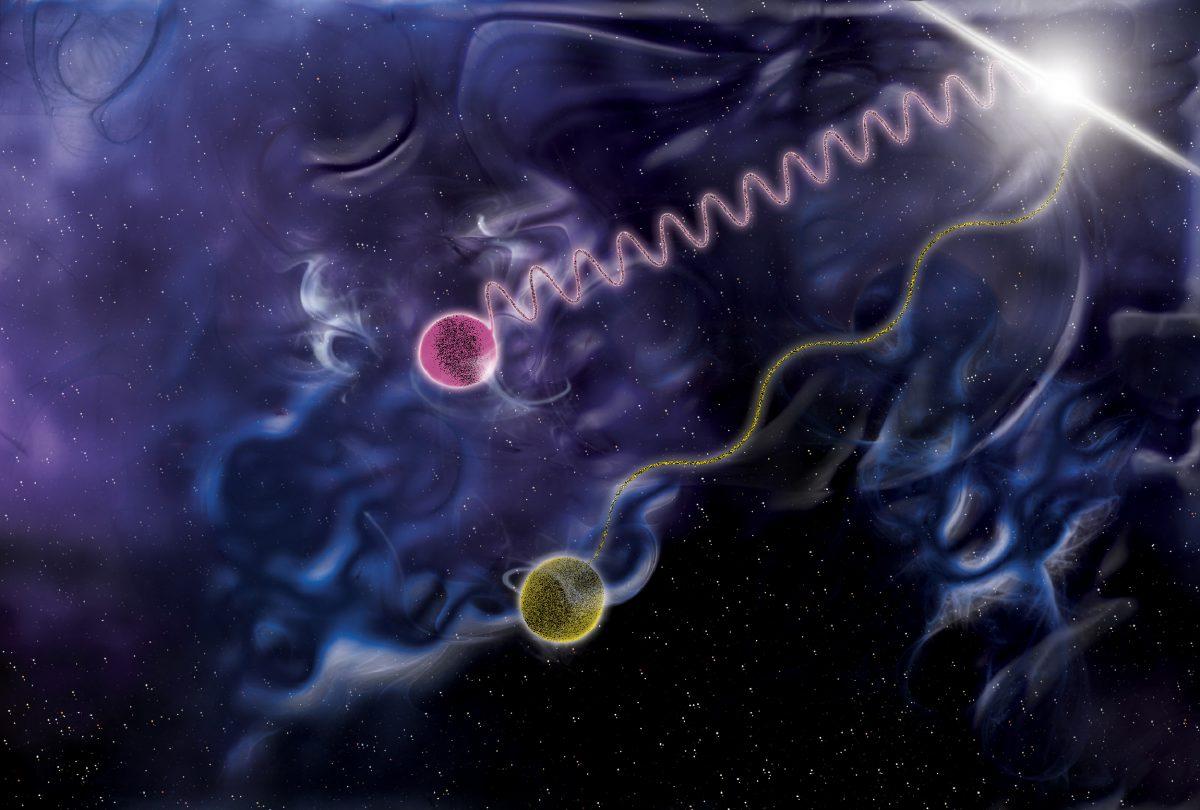
All massless particles move at the speed of light, for example, a photon and a gluon that carry electromagnetic and strong interactions, as well as gravitational waves that carry a gravitational interaction.
Two fundamental constants also appear in quantum mechanics: c and h, the last of which is Planck's constant . c is the speed limit of all particles, the speed with which all massless particles must move, and the maximum speed with which all interactions can propagate. Planck's constant h was extremely important for describing the quantization of interactions between particles and the number of probable outcomes. An electron in orbit around a proton can move to different energy levels, but they appear discretely, through certain steps, the size of which is determined by h.
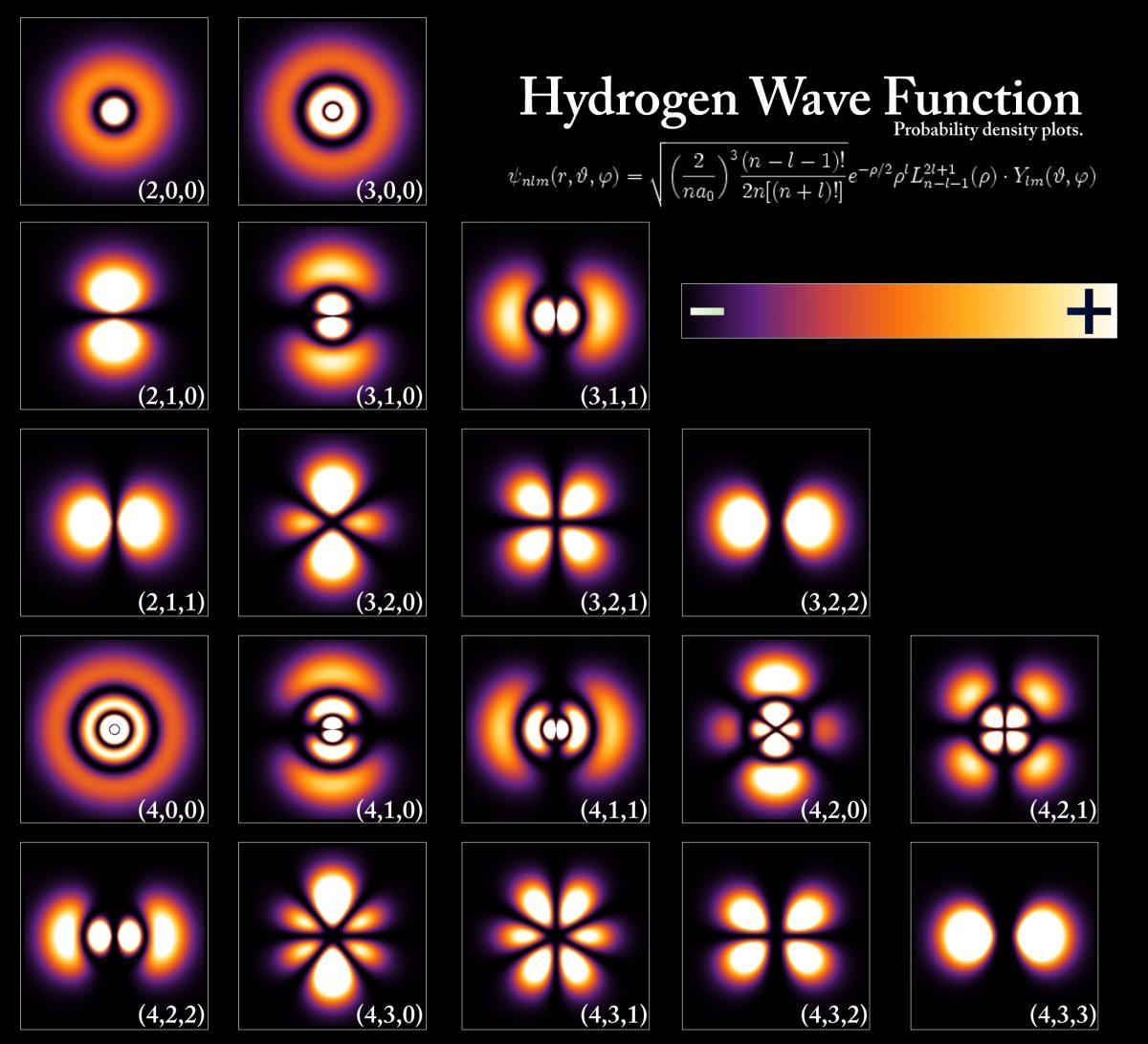
The energy levels and wave function of an electron corresponding to different states of the hydrogen atom. Energy levels are quantized using a formula that depends on Planck’s constant.
Together, these constants, G, c, and h, can be used in various combinations to build a specific length, mass, and time period. These values are called, respectively, the Planck length , the Planck mass, and the Planck time (other units can also be constructed — Planck energy , Planck temperature , etc.). In general, these are the length, mass, and time interval at which, in the absence of other data, quantum effects begin to play the role. There is some pretty convincing evidence, and it is not difficult to understand.
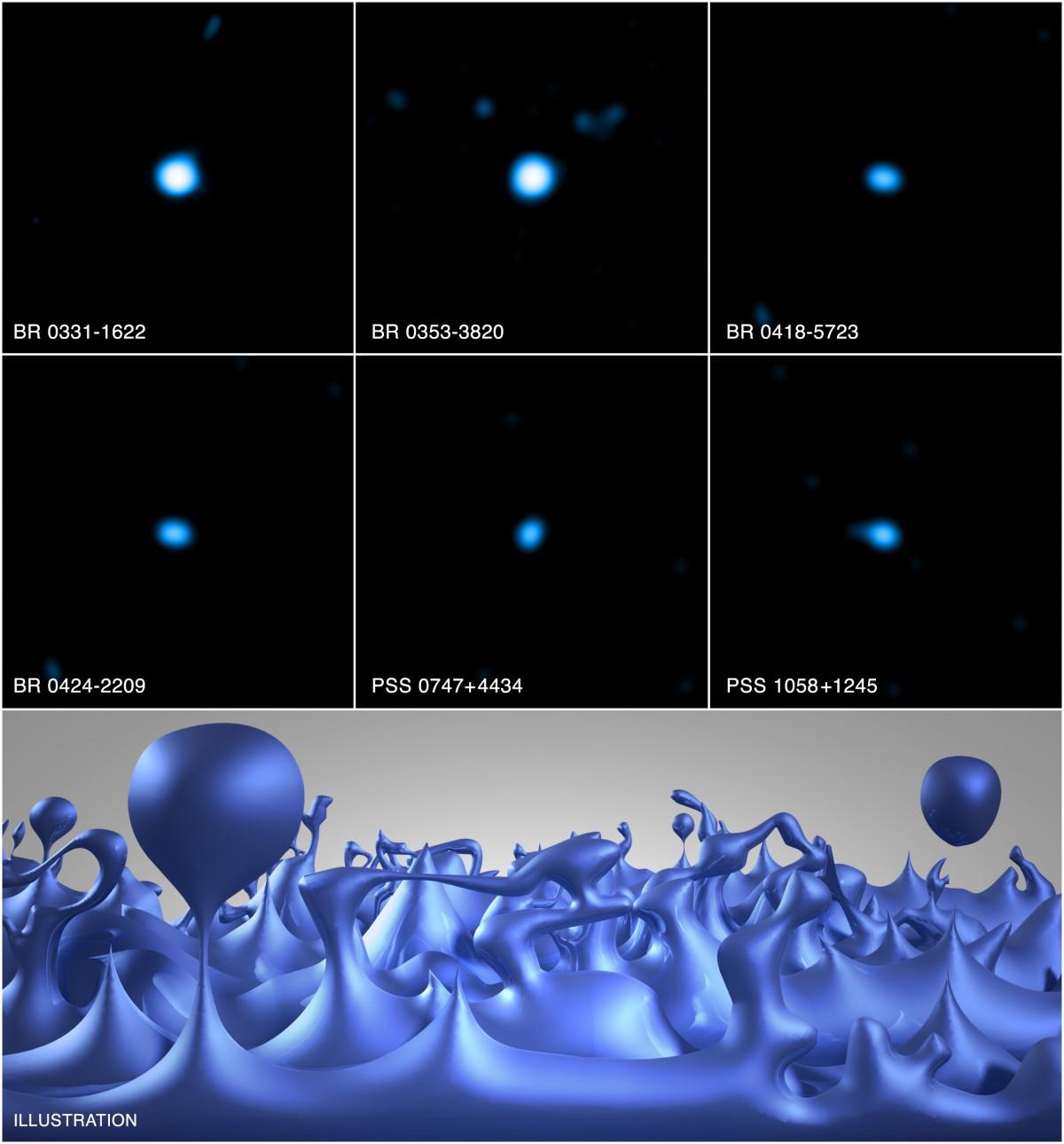
Observations in the X-ray range impose restrictions on the grain size of the space, but so far they are still far from the Planck scale.
Imagine that you have a particle of a certain mass. You can ask the question: “if this particle has such a mass, to what extent should it be squeezed, so that it becomes a black hole?” You can also ask: “if I had a black hole of that size, how long would it take a particle moving with the speed of light, to overcome such a distance? ”It is these values that correspond to the Planck mass, length, and time. The black hole of the Planck mass has a size equal to the Planck length, and to overcome this distance from the light would take away the Planck time.

Although the effects of quantum gravity can manifest themselves in black holes, a very very small BH would be required to observe such an effect.
But the Planck mass seriously exceeds the mass of any particle ever created: it is 10 19 times the proton! The Planck length is 10–14 times less than any distance we have ever dealt with, and the Planck time is 10–25 times less than any direct measurement. These scales are not accessible to us directly, but have a meaning for another reason: the Planck energy (which can be obtained by substituting the Planck mass in E = mc 2 ) sets the scale at which quantum effects should appear.
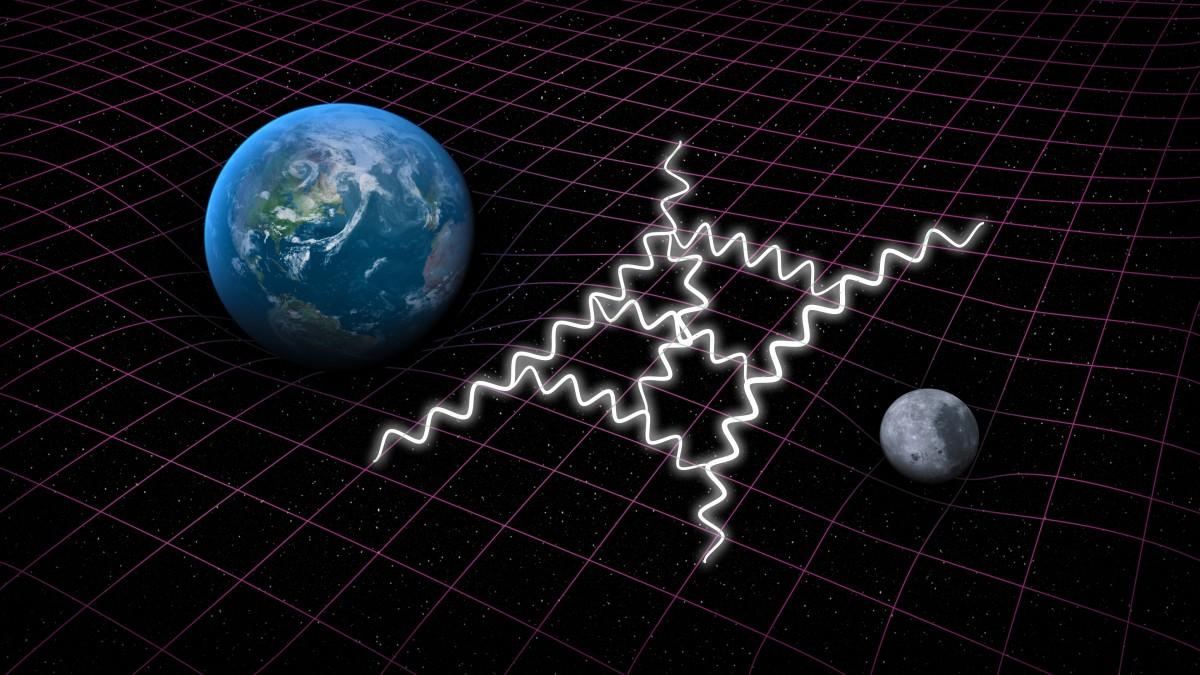
With a sufficiently strong curvature of space-time, quantum effects also increase.
This means that at such high energies — or, what is the same thing, on the time scales of smaller Planck time, or on spatial scales, of smaller Planck length — our laws of physics stop working. Quantum gravitational effects begin to emerge, and GRT predictions become unreliable. The curvature of space becomes too large, which means that the background that we use to calculate quantum quantities also ceases to be reliable. The relationship between the uncertainty of energy and time means that uncertainties become greater than the quantities that we know how to count. That is, known to us physics does not work.

Emergence of the Higgs boson in a compact muon solenoid , particle detector at the Large Hadron Collider. This impressive collision is 15 orders of magnitude less than Planck energy.
For our universe, this is not a problem. These energy scales are 10-15 times higher than the level available for the LHC, and 100,000,000 exceed the highest energy particles created by the Universe (the highest energy cosmic rays), and even 10,000 times higher than the energy that the Universe had immediately after the Big Bang. But if we wanted to probe these restrictions, then the only place where they would play an important role would be in the center of black holes.

The black hole is known for its ability to absorb matter and the horizon of events, because of which nothing can escape - but the most interesting and unknown physics occurs in the central singularity.
In these places, masses exceeding the Planck mass are compressed to sizes that are theoretically smaller than the Planck length. If there are places in the Universe where we cross this boundary and enter the Planck regime, it is only there. Today we cannot reach them, because they are protected by the horizon of the black hole, and therefore are not available. But if you wait - and you need a lot of patience - the Universe will give us this opportunity.
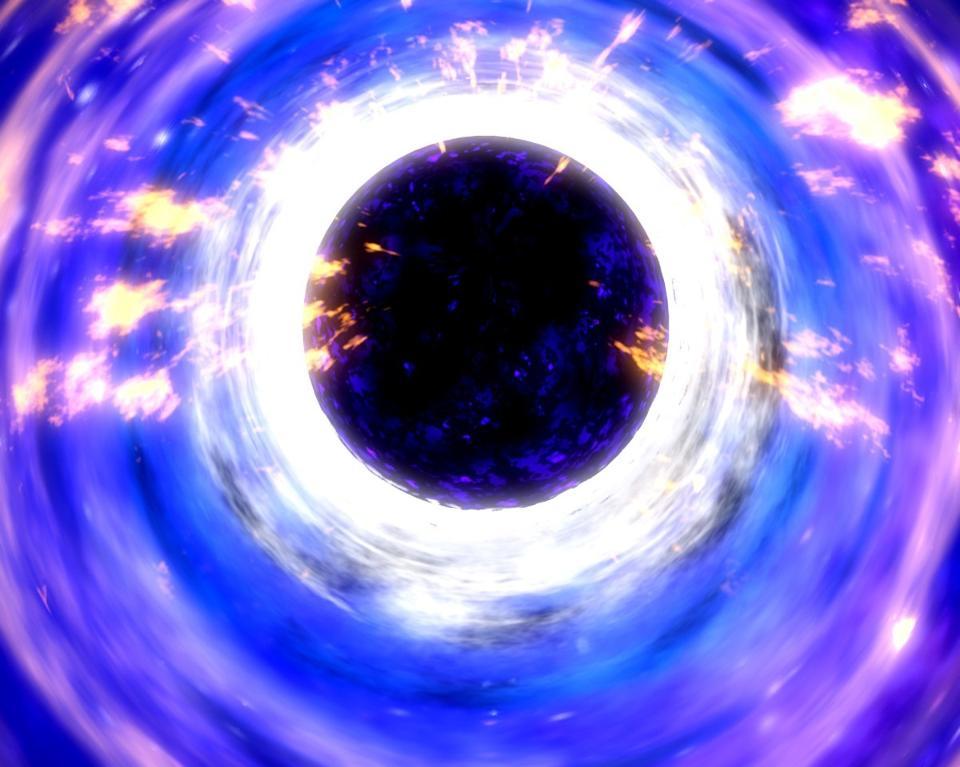
After 10 67 -10 100 years, all black holes of the Universe evaporate completely due to Hawking radiation, and time depends only on the BH mass.
Black holes slowly decrease over time. The combination of quantum field theory and the curved space of GR leads to the fact that a small amount of radiation is emitted into space outside the event horizon, and the energy of this radiation is extracted from the mass of a black hole. Over time, its mass decreases, the event horizon shrinks, and after 10 67 years the BH of the solar mass will completely evaporate. If we manage to collect all the radiation emitted by it, including the last moments of its existence, we, of course, will be able to compare the data and see if there were any quantum effects there that our current theories cannot predict.

How Hawking radiation leaves a black hole (quantitative illustration)
It is not necessary to have the prohibition of dividing space into units shorter than the Planck length, or prohibiting the division of time into units less than the Planck time. We only know that our description of the Universe, our laws of physics, do not work on these scales. Is space really quantized? Is the flow of time continuous? What do we do with the fact that the mass of all the fundamental particles known to us is much smaller than the Planck mass? These issues in physics have not yet been resolved. The Planck scale is not so much a fundamental limitation of the Universe as a limitation of our current understanding of the Universe. That is why we are doing research! Perhaps, with the increase in our knowledge of the Universe, someday there will be answers to questions about the existence of fundamental limitations of space and time.
Ethan Siegel - astrophysicist, popularizer of science, blog Starts With A Bang! He wrote the books Beyond The Galaxy , and Treknologiya: Star Trek Science [ Treknology ].
Source: https://habr.com/ru/post/374037/
All Articles